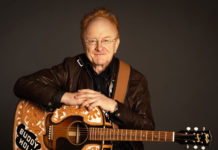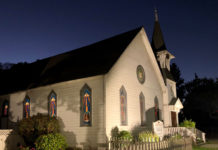Of course, every religious institution has its own method of choosing its leadership. The news recently guided us through the ancient process by which Francis I became Pope, leader of the Roman Catholic Church’s one billion members.
While this captivating event was taking place in Rome, I was intrigued by a quite different process taking place in England. There, a new leader was being chosen to oversee the spiritual welfare of some 80 million members of the worldwide Anglican Communion.
In the sixth century, Pope Gregory I sent a missionary to England to bring Christianity to that island. Founding an abbey and cathedral in Canterbury, Augustine became the country’s first bishop, and over the centuries his successors became archbishops and then achieved the title of “Primate of all England.”
Last year, when the previous Archbishop of Canterbury, Rowen Williams, requested to retire to become Master of Magdalene College at Cambridge University, it set into motion a lengthy process to replace him. Since the Church of England is a state church, both Queen Elizabeth I and the British Parliament became deeply involved in this project.
• The Queen, as “Supreme Governor” of the Church, accepted his retirement.
• The Crown appointed a 16-member Commission to privately review male candidates for the position. (Although the CofE has women priests, only men are authorized to become bishops.)
• The Commission chose two names and sent them to the Prime Minister for approval.
• The Prime Minister sent one of the names to the Queen, who announced it as her appointment.
The name was Justin Welby, the 56-year-old Bishop of Durham. Dr. Welby had followed a career as an oil industry executive before relinquishing a high salary to enter seminary in 1989 at the age of 33. He was ordained a priest in 1992 and served in several positions before becoming a bishop in 2011.
This February he attended worship in London’s St. Paul’s Cathedral where his “Confirmation of Election” took place. This low-key legal ceremony was presided over by the Archbishop of York and several other bishops.
New to the process this year was a “Journey in Prayer” during which Welby traveled to five cities in the Province of Canterbury (the southern half of the country). He visited schools, cathedrals and town squares in Norwich, Coventry, London, Truro and Chichester, welcoming the public and participating in a variety of prayer services.
On March 21, the Most Rev. Justin Welby was enthroned as the 105th Archbishop of Canterbury during a two-hour ceremony in historic Canterbury Cathedral. The service began when the Dean read a letter from the Queen authorizing him and other Cathedral representatives to go to the west door to welcome Welby who, following ancient tradition, banged on the door three times with his pastoral staff. A crowd of 2,000 included the Prime Minister, Prince Charles and representatives of other world religions.
“Cathedral” comes from the Greek word for “seat,” and the enthronement ceremony included officially seating the new cleric on two seats:
• The Diocesan Throne, symbolizing his role as Bishop of the Diocese of Canterbury
• The Chair of St. Augustine, symbolizing his role as Primate of All England and the symbolic head of the Anglican Communion, a family of 38 self-governing churches (including the Episcopal Church in the United States), which generally follow the traditions of the Book of Common Prayer.
It is generally recognized that Archbishop Justin faces many challenges as he seeks to guide Anglicans through controversies involving the consecration of women bishops, same-sex marriage and long-term decline in Church attendance.







